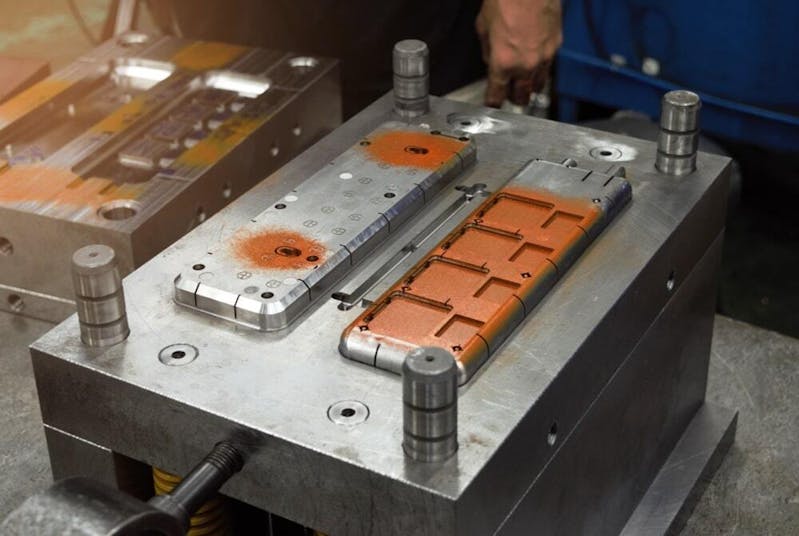The process of injection molding has developed as a transformative manufacturing technique, effectively converting virgin materials into complex pieces and items. As fields continue to search for ways to improve productivity and cut costs, the notable advantages of this process are capturing attention. From its capacity to manufacture high volumes of parts with great accuracy to reducing waste, this method is establishing itself as an essential asset in modern manufacturing.
In today's rapid market, the need for efficiency is greater than ever, and injection molding techniques are escalating to meet that challenge. This innovative technique not only reduces production time but also allows for enhanced design flexibility, which makes it the preferred option for companies striving for both quality and speed. Grasping the astonishing benefits of injection molding can assist organizations unlock new dimensions of effectiveness and propel their success in a competitive landscape.
What exactly is Injection Molding
The injection molding process refers to a manufacturing process that consists of producing parts by forcing molten material into a mold. This method is commonly employed for manufacturing plastic products but can also cater to materials such as metallic materials, glass products, and ceramic materials. The injection molding process starts with the heating of the raw material until it reaches a molten state and then pumping it into a carefully crafted mold shape. Once the material cools and sets, the form is released, and the finished part is removed.
A key pros of injection molding is its capacity to manufacture intricate designs with high precision. This is made possible by the use of intricate molds that are capable of handling fine details. The consistency and reproducibility of this technique make it perfect for large production runs, as the same casting can produce thousands or even millions of uniform components without notable variations in quality. This effectiveness results in reduced waste and cuts costs over time.
Injection molding techniques are essential in various industries, including automotive, consumer products, medical devices, and the electronics field. As manufacturers continue to search for budget-friendly and productive production methods, the demand for the injection molding process is expected to grow. The injection molding technique not just simplifies production but also fosters novelty, allowing businesses to explore new designs and capabilities that were before challenging to produce.
Cost-Effectiveness and Efficiency
One of the key benefits of the injection molding process is its economic efficiency, particularly for high-volume production runs. The upfront setup and tooling costs can be substantial, but these expenses are quickly balanced over mass production of output. Once the molds are created, the process allows for rapid production of uniform parts, leading to reduced unit costs. This cost-saving factor makes injection molding a preferred choice for companies looking to maximize their expenditure while producing top-notch products.
Speed is another key advantage of injection molding. The process is engineered to be effective, with cycles typically ranging from a short duration to a few minutes, depending on the difficulty of the component. This quick production capability means that manufacturers can meet large orders in a more compressed time frame, ensuring that businesses can meet market demands and respond promptly to changes in consumer preferences. The ability to produce thousands parts in a day can significantly enhance a company's operational efficiency.
Moreover, the reliability and precision offered by injection molding enhance to its overall effectiveness. The technology allows for tight tolerances and complex designs, ensuring that each product is made to specifications without the need for heavy rework. This precision not only reduces waste but also enhances the quality of the end product. As a outcome, companies can rely on injection molding services to provide parts that meet their standards, further strengthening the process's reputation for economic viability and efficiency.
Sustainability and Material Efficiency
The injection molding process is a technique that inherently promotes environmental sustainability through its efficient use of materials. Compared to traditional manufacturing methods, injection molding reduces waste by producing accurate parts with only the necessary amount of material. This effectiveness not only reduces costs for manufacturers but also mitigates the environmental footprint of production. With the ability to reprocess plastic waste back into the molding method, companies can greatly enhance their sustainability efforts.

The choice of materials in injection molding also holds a key role in sustainable manufacturing. Many injection molding providers now offer biodegradable polymers and recycled plastics that are both eco-conscious but also retain the strength and robustness required for different applications. This shift towards sustainable materials helps decrease reliance on non-renewable resources, synchronizing production practices with global sustainability goals.
Furthermore, the energy efficiency of the injection molding method contributes to its eco-friendly credentials. Modern injection molding machines are designed to use less energy, often incorporating advanced technology that optimizes the cycle time and reduces energy demand. By using energy-efficient practices and equipment, manufacturers can minimize their carbon footprint while producing premium components, making injection molding a smart choice for sustainably-minded companies.
